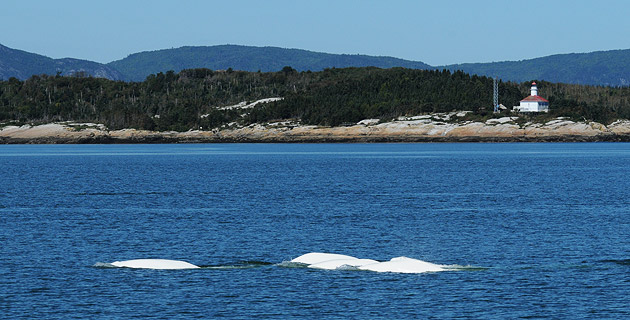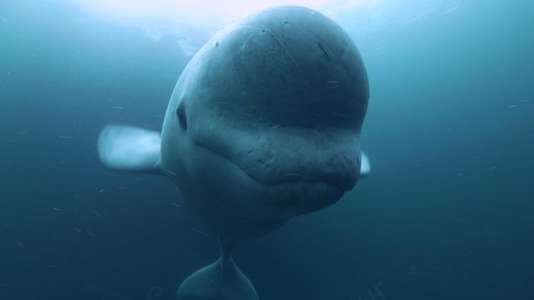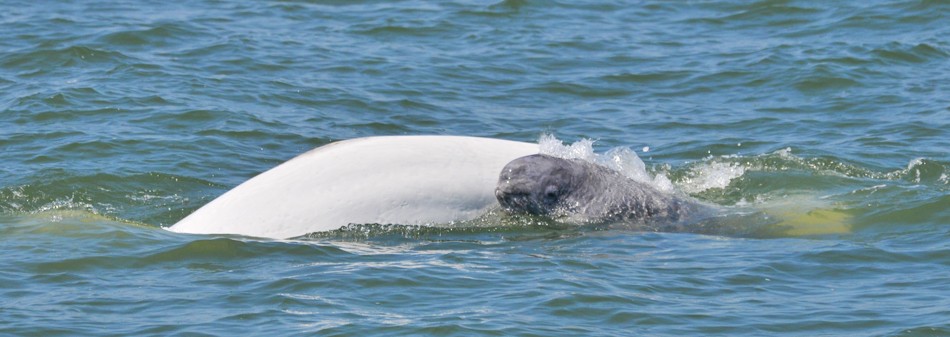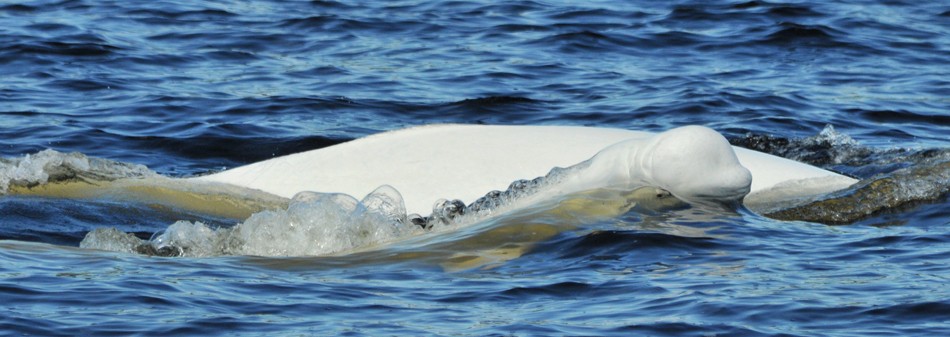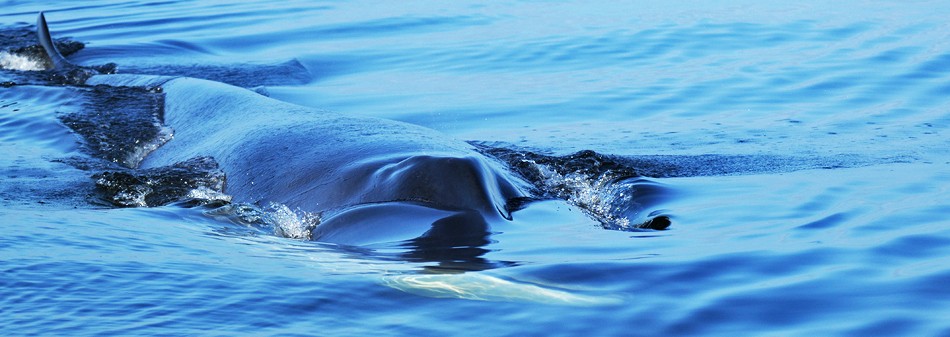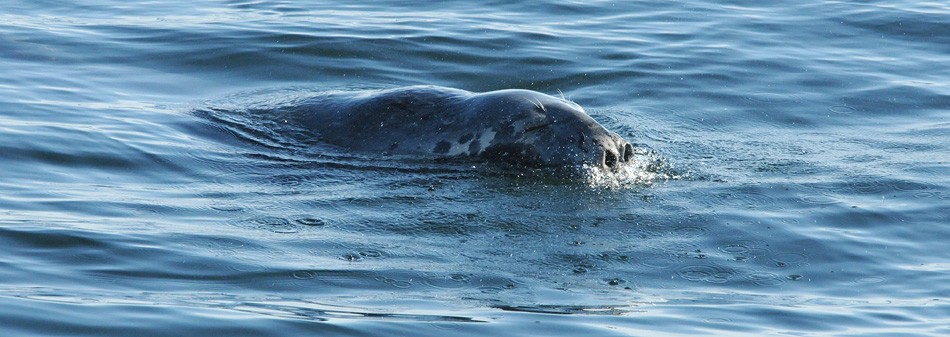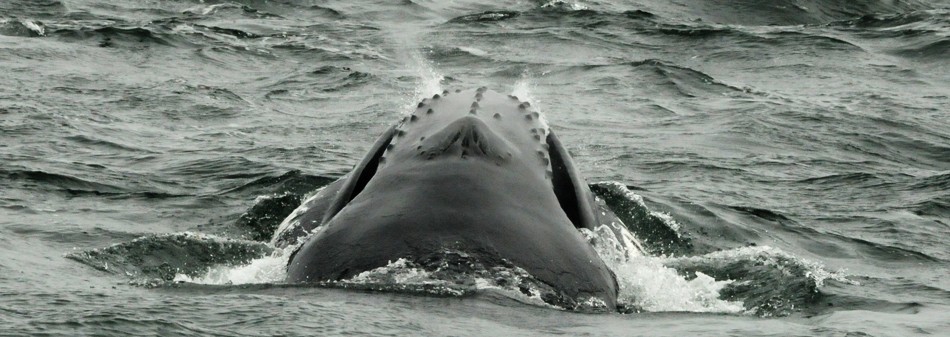13/06/2017
A historic relocation: from the Nepisiguit River, New Brunswick, to the St. Lawrence Estuary, Québec
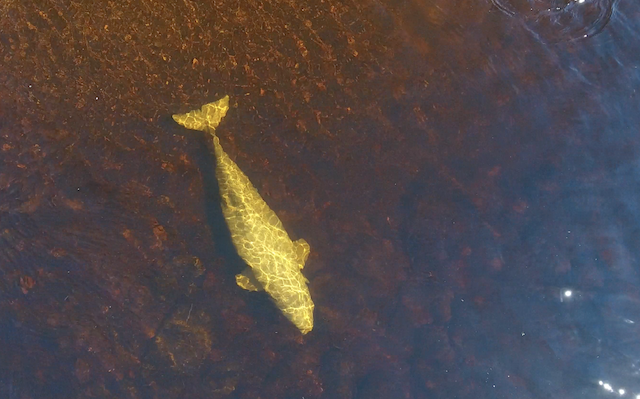
On June 15, a historic operation took place in New Brunswick and in Quebec to relocate a wayward beluga. The GREMM coordinated the response.
At daybreak, teams prepared themselves at each response site: the Nepisiguit River, the Bathurst Airport, the Rivière-du-Loup Airport, and the Port of Gros-Cacouna.
A team from Fisheries and Oceans Canada and the Marine Animal Response Society caught the young male around 12 p.m., Atlantic time. This was not an easy feat. Once the whale was caught, veterinarians from the Université de Montréal Faculty of Veterinary Medicine, the Vancouver Aquarium and the Shedd Aquarium tested his condition before he was transported. The veterinarians gave him a fair prognosis. He had drank a lot of fresh water and lost weight. He needed to be relocated for his survival in the very short term.
During transport by truck and plane, the beluga’s condition remained stable. The beluga arrived in Rivière-du-Loup at about 1:30 p.m. Quebec time. He was immediately transported to the port of Gros-Cacouna. After a satellite transmitter was inserted, blood was taken, and a biopsy was done, the animal was lowered by crane onto a submerged pontoon attached to the Bleuvet, the Group for Research and Education on Marine Mammals’ research vessel. When the animal hit the salt water, it began to breathe more easily, more calmly and at a more relaxed rate.
A Parks Canada team patrolled the sea during the day in search of beluga pods. The Bleuvet joined the Parks Canada vessel Alliance with a pod made up of young and female belugas two nautical miles from the port At 4:54 p.m., the beluga was released into the St. Lawrence Estuary. During the first breathing sequence, it swam slowly. The second breathing sequence was energetic; the whale was with some small grey belugas (juveniles). The team could hear the beluga’s calls through a hydrophone. It then lost visual contact with the animal, but its whereabouts were located with the aid of the satellite transmitter. Over the next few hours and days, the beluga will be track remotely. It is hoped that it will be integrated into a group of other belugas. The team returned to port encouraged, but aware that there were still a number of challenges facing the beluga.
Here is a drone footage of the release in the St. Lawrence. At first, the beluga swam quite slowly but get more vigorous after its first breath. You can see the tag on its right lap.
Since July 4: we lost track
On July 4 in the evening, the GREMM research team did not receive the transmissions of the satellite tag placed on the right flank of the beluga. Hoping for a temporary problem, the researchers waited two more days before having to resolve the following: we lost contact with the beluga.
Some hypotheses may explain the situation: the beacon may be broken; It may have detached itself from the back of the beluga; or the beluga is dead and the body sank or the beluga floats on its back and the beacon finds itself submerged at all times, preventing it from transmitting its signal.
The first hypothesis seems unlikely for researchers. The second one could be more plausible: in 2015, the research project “Belugas on the Move”, which aimed to better understand the winter use of the territory by the belugas, had not produced the expected results. This project also used a LIMPET (Low Impact Minimally Percutaneous Electronic Transmitter) satellite tag and the tag retention did not exceed 13 days. For the placement of the tag on the Nepisiguit beluga, the team therefore attempted a different technique. This technique is used in Alaska on the beluga population of Cook Inlet, and provides a follow-up for 60 to 130 days. In the case of the Nepisiguit beluga, follow-up will have lasted 19 days.
Finally, the hypothesis of the death of the animal could be confirmed if the carcass of the beluga were to run aground on the banks. It would then be possible for the transmission to resume indicating the position of the carcass or the carcass be identified and reported to the Marine Mammal Emergency Call Centre at 1-877-7baleine.
At the time of the release in the water on June 15, the veterinarians had issued a reserved prognosis. They were particularly concerned about the debility of the electrolytes in its blood formula and doubted whether it would be possible to recover. However, the beluga had so far thwarted the prognosis by continuing its course, swimming more than 570 km through the estuary.
“Nothing is being played yet,” says Robert Michaud, Scientific Director of the Group for Research and Education on Marine Mammals and coordinator of the attempt to rescue the young beluga. “If the animal is still alive but its beacon has fallen, it will have left a scar under its dorsal crest which should allow us to recognize it easily. Our season with the belugas begins and we will keep our eyes wide open. ”
The story of the beluga does not stop with the end of the tag. Many developments can still occur, and the rescue operation has already tested hypotheses and advanced science.
Recap
June 2: the Marine Animal Response Society received notification of a beluga roaming the Nepisiguit River, near Bathurst, in New Brunswick.
June 7: The beluga is unable to get out of the river on its own. The displacement plan is prepared.
June 8: Fisheries and Oceans Canada and Marine Animal Response Society experts arrive on the scene to assess the various displacement options.
June 9: Unveiling of the beluga’s relocation plan to the Saint Lawrence. Six days are needed to get the equipment, human resources, optimal weather conditions and all the components required for the response.
June 15: Day of the response.
July 3: The beluga was around Longue-Rive.
July 4 : No new position from the tag was received.
We sincerely thank all those who participated in the response:
Group for Research and Education on Marine Mammals, Marine Animal Response Society, Maritime Marine Animal Response Network, Réseau québécois d’urgences pour les mammifères marins [Quebec Marine Mammals Emergency Response Network], Fisheries and Oceans Canada’s Science Team, Conservation and Protection Team, and the Fisheries and Oceans Canada, Gulf Region/Fisheries and Oceans Canada, Quebec Region Management Team, Parks Canada, Transport Canada, Centre de remorquage 2000, the Université de Montréal Faculté de médecine vétérinaire, Vancouver Aquarium, Shedd Aquarium, Whale Stewardship Project, the Port of Gros-Cacouna, Arrimage Québec, the Rivière-du-Loup Airport, Bathurst Regional Airport, the Bathurst and Rivière-du-Loup police services and all on-site volunteers at different locations.
Follow the updates with #greatbelugarescue on Twitter.

